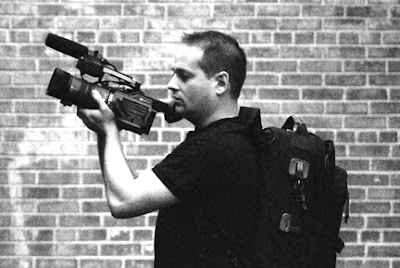
WASHINGTON, 12 September 2009 – Following is a message I sent to a colleague in response to his query about the future of backpack journalism. I think my response may be instructive especially for practitioners of the craft, like former student and colleague Glenn Luther, seen above.
I’ve divided my message into Parts I and II:
PART I:
I believe the backpack journalism model delivers a more immediate, more intimate, more fluid brand of visual communication than that attainable with the traditional model using shoulder-held camera and crew of camera person, sound person, correspondent and producer. And for me, this is the real value of this model: The quality of product that it allows us to generate. I believe the backpack journalism model is most powerful and most effective when applied to character-driven pieces on which the journalist has the luxury of some time to develop those characters. I also believe it works very well in conditions where access is an issue.
You might take a look at a piece I did last year for NOW on PBS. I was embedded with Alpha Company of the 24th Marine Expeditionary Unit in Afghanistan’s Helmand Province. I spent about three weeks with them and the resulting piece, “Afghanistan: The Forgotten War,” is up for a national Emmy Award, to be announced 21 September in New York. See http://www.pbs.org/now/shows/428/index.html. I feel the nomination validates the backpack journalism model, particularly considering the other contenders for the award — 60 Minutes, Frontline, Dateline, 360 With Anderson Cooper – most likely used the traditional, highly produced team model. On the other hand, I proposed, shot, produced, reported, wrote and narrated the Afghanistan piece. I sat with an editor in New York and contributed to that process, too. For logistical as well as very practical reasons on the ground, I don’t think that Afghanistan piece could have been generated with a traditional crew — and certainly not for the same cost that I incurred.
Especially in the realm of foreign news and documentary, then, I believe this model will be a significant part of the new media landscape, primarily because it delivers a more effective product, and secondarily because it can reduce production costs so drastically without violating union regulations, at least when practiced overseas.
continued …
